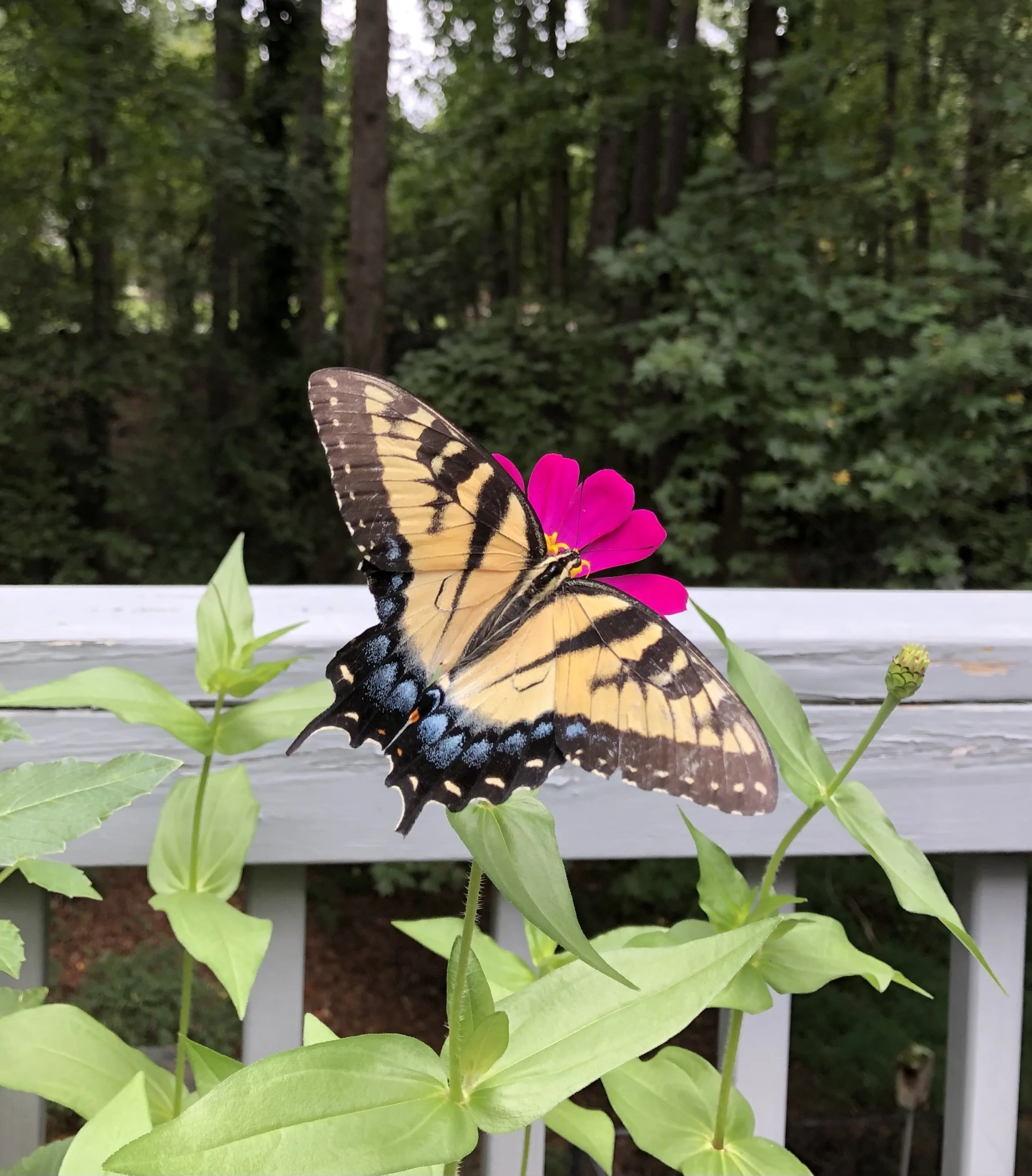When we stepped into the Cecil B. Day Butterfly Center, I couldn’t help but feel a little excited. I knew what to expect—I’d visited before with our daughter—and now I wanted to show my husband, Mart.
We were in Callaway Gardens for a weekend retreat where he was leading a workshop. The retreat had ended, but we stayed on for an extra day to explore the grounds together, including the Butterfly Center.
One of North America’s largest tropical butterfly conservatories, the Center has a glass-enclosed rain forest environment with tropical plants that feed and support butterflies. On a typical day, 1,000 or more of these beauties, many of them freshly hatched, flutter freely through the air to the delight of visitors of all ages.
Before we went inside to see them, though, an assistant pointed out an exhibit of chrysalises waiting to hatch as well as a film about the butterfly’s life cycle. She also gave us laminated sheets with pictures of different types that we might see. Finally, she said, “The butterflies will be flying around you. They may even land on you. Just be careful where you step. They may be on the ground.”
Nodding, we opened and closed the door quickly to ensure that none of the butterflies escaped. Warm and damp air rushed to meet us. We saw tall lush trees and plants hanging over the pathways and flower beds lining the pathways below.
Then a few of the little beauties seemed to float by.
“Wow,” Mart said.
“I know!” I grinned.
Grabbing our phones, we started taking pictures of the fragile creatures and each other. They fluttered above and below us and right in front of our faces. One of them even landed on Mart’s hat.
It was fun to search for them, too, because they might be hidden in plain sight—blending in with the brightly-colored flowers, resting underneath large leaves, or feeding on orange slices that the staff had provided and nestled among the branches.
A few other visitors made their way along the paths—mostly families with young kids and a few individuals.
As I was following one butterfly in the air, I was snapping photos as fast as I could in hopes of getting a few clear shots.
All of a sudden, a young boy near me exclaimed, “You stepped on one!” He looked at me and pointed to the ground.
“What?!” I said and stepped back, revealing a flattened butterfly beneath my foot.
“You killed it!” he said, running off to find his mother.
“Oh, no! I’m sorry!” I said, feeling terrible and somehow reckless. I’d killed a beautiful defenseless butterfly and traumatized a little boy and now everyone in the center knew it. I wanted to fade into the shadows under a tall bush with enormous leaves.
My reckless stepping notwithstanding, butterflies are among my favorite creatures. I’ve been to several centers and exhibits through the years and have found each one to be a delight. I sometimes wonder, what would it be like to have my very own conservatory full of them? Hmmm.
Butterflies, as beautiful and graceful as they are, have a very important job. They are pollinators: when they visit flowers to feed on the nectar inside, pollen sticks to their bodies and gets carried to other flowers. The pollen fertilizes the flowers so they can reproduce more.
The work of pollinators helps produce plants that become food for us and for animals, which also helps the economy. In addition, pollination contributes to plant growth and life, resulting in clean air for us and oxygen to breathe.
Butterflies are not the only pollinators, however. So are bees, moths, and other insects, plus birds and some small mammals.
Every time I walk by a flowering plant and spot a bee or hear that tell-tale buzzing, I have to stop and see if I can get a photo. I move patiently and slowly (not reckless at all!). My patience is usually rewarded.
In the video below, you’ll see a pollinator ducking into and out of the petals of a purple Rose of Sharon blossom. You may even see a potential conflict narrowly avoided.
Even though they play a vital role in the food chain, many pollinators like butterflies and bees are in danger of being wiped out because of habitat loss and pesticide use.
If you’d like to help, here are some ways to create a welcoming environment for butterflies and bees:
choosing plants and flowers that attract them
decreasing the use of pesticides in your yard
exploring conservation efforts
And, of course, as I learned: watching where you step.
Are you receiving my blog posts by email? Here at Glimsen, I share glimpses of the beauty around us in nature, the arts, and the unexpected. If you would like to see more, click here to sign up to receive my posts and updates by email, and you'll also get a free printable gift of beauty (below) in your inbox. I look forward to connecting with you!







